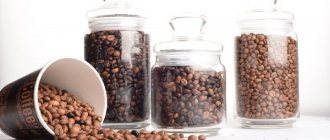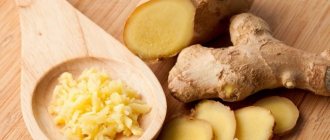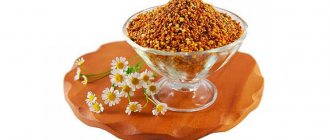In winter, it is difficult to find fresh root vegetables, petiole and leaf celery in stores. That’s why housewives stock it in September-October, when there is a lot of celery at markets and farm sales. And for summer residents, the problem, when a good harvest of green mass and tubers has been harvested, is how to store celery with minimal losses.
The simplest option is a refrigerator. But it won’t fit much, and celery doesn’t store well in the refrigerator. And there are already ready-made solutions, although few know about it. The petioles and leaves are frozen, preserved and dried. The tubers are kept fresh in sand. There are several more options on how to preserve the product throughout the winter. Choose the one that suits you.
Features of garden celery
For those who grow this biennial plant, it is especially important to know how to store celery. Even a very generous harvest will be necessary, by the way, so the more preparations housewives make, the better, since such a seasoning will always have a worthy use.
With the help of root vegetables and herbs, you can add brightness and taste to any dish, protect yourself from viruses, and support your immune system in winter at home.
Celery comes in three varieties:
- root;
- petiolate;
- sheet.
The first has a gray-brown color on the outside and white on the inside of the root crop. The root rosette is used for preparing salads, first courses, and juice. Salad or petiole celery has thickened leaf petioles. The root does not have a tuberous form. Perfect for main dishes and salads. And leaf celery has a second name “curly” and is used as a spice. Greens are used in cooking in the same way as parsley: dry, frozen or fresh.
Harvesting and choosing greens
You should harvest celery from July to September, when the plant has already accumulated a sufficient amount of vitamins and minerals, but has not yet begun to bloom. After the seed shoot appears, the greens acquire a bitter taste.
Before storing celery in winter, about a month before digging it out of the soil, the green part is cut off, leaving 2 - 3 cm of tops above the surface of the ground
It is important to collect rhizomes from the garden before frost sets in. And when they are already dug out of the ground (they do this in dry weather), they are left for some time there, in the garden bed
This is done so that the roots dry out a little and become weathered. At the same time, a dense protective crust forms on their surface.
Celery should be dried with good ventilation.
If you have to buy root vegetables at the market, pay attention to their appearance. The surface of the vegetable should be smooth, without growths or cracks.
If the sound is loud when tapped, this is an indication of the presence of voids inside.
The structure of the root crop should be dense and elastic. If, when you press on its top, you feel a soft and slippery consistency, the fruit has begun to rot inside.
If you need the green part of celery, look at its condition. Stems and leaves should have a bright color and a juicy structure, without signs of drying out or rotting. In supermarkets, greens (celery stalks) are usually packaged in transparent bags in bunches. Therefore, you can take a good look at them when purchasing. On the market they choose succulent petioles without a seed shoot, bright green in color.
Useful properties of celery
This versatile food product has many amazing properties that make the root vegetable healthy and nutritious. Celery slows down the aging process and contains many vitamins, minerals, acids and protein compounds.
It is especially important for elderly and elderly people to take celery, since the root vegetable is able to normalize water-salt metabolism. It is often prescribed to supplement basic medications for patients with kidney disease, arthritis and arthrosis. The plant can also calm the nervous system; it is used as a natural sedative in stressful situations.
A slight addition of dried celery root to tea helps improve well-being and prevents the development of neurosis. The root and stems of this garden crop contain active ingredients and essential oils that help normalize the functioning of the stomach and stimulate digestion. Celery is especially useful for people suffering from diabetes.
Celery contains a variety of vitamins: A, B, E, K. There are also a number of acids: ascorbic, nicotinic, asparagine, tyrosine, carotene.
Rich in minerals in addition to the standard calcium, magnesium, phosphorus and potassium found in most root vegetables, celery contains iron, zinc and manganese. Such a wealth of useful components makes the root vegetable an indispensable natural medicine in the fight against allergies, harmful bacteria, and vitamin deficiencies. It perfectly tones, has an antiseptic effect, and also improves intestinal motility.
When to harvest celery for storage
At the end of July, harvesting begins for the purpose of further harvesting. It is important to do this before flowering begins, otherwise the root crop will lose most of its vitamins to the seeds. Greens can be collected separately, since greens are also used in cooking.
To harvest, the top of the plant is completely cut off, leaving only small petioles. The dug up root vegetables can be sold or stored at home for a week.
If the flowering period has already been missed, then you will have to dig up the plant in late autumn. In mid-October, celery is “bleached.” This process involves tying the stems near the root into a bundle. Cover the top with sawdust or straw.
To prevent frost from reaching the root crops, they are covered with soil or covered with boxes after tying. In this state, garden crops are stored until digging. This will provide a delicate taste in winter.
How to choose the right vegetable
A number of criteria that will help in choosing a ripe and tasty vegetable:
- The leaves have a rich green color without yellow or brown spots.
- The surface of leaves, cuttings and roots should be smooth, without dents or cracks. This indicates the ripeness of the vegetable and proper harvesting.
- A high-quality product has a rich herbaceous smell, which indicates the high taste of the leaves and stem.
Selection of celery at the market and in the supermarket
When choosing celery in a store, you need to check the shelf life and quality of the root crop.
The fact that the plant is fresh can be determined by external signs:
- The stems are smooth in appearance and have no voids. Elastic, hard, do not “ring” when tapped.
- When you press the root, it should not release juice or be soft. Not fresh celery will be slippery.
- The color of a good vegetable is rich. It has a bright green color. The presence of spots or yellowness on the stems and leaves indicates that the product has been “staying” on the store shelf.
When purchasing celery on the market, you should pay attention to its external condition. It is better to choose vegetables with smooth, even skin without knots or spots. Such root vegetables will retain their freshness and taste characteristics for a long time. You also need to check if the celery is rotten inside. To do this, press the top with your finger to make sure it is firm.
Cellar storage
It is recommended to keep only hard celery tubers in the cellar, without damage, cracks, and with the least knobbiness. Fewer cones on the surface of the root crop will allow it to be better preserved. A small vegetable quickly loses its juices and is stored worse.
Before sending the root crop to the cellar, it is not washed or trimmed, otherwise it will spoil faster. The only thing is to cut off the tops, leaving 1 cm petioles. If soil has stuck, it is carefully cleaned off with your hands.
There are two ways to store celery in the cellar:
- In clay. The substance is diluted with water to obtain a mass similar in thickness to sour cream. Then each vegetable is coated with it. They are laid out in a warm place until the clay dries, after which they are put away in the cellar, laid out on shelves. Carrots are also stored in such a mash jar.
- In sand. Dry sand is poured into plastic or wooden boxes 1/3 full. Place the root vegetables at intervals of 1–2 cm. Cover the top with sand so that the vegetable is completely covered. The shelf life of vegetables in the cellar at a temperature of no more than +12°C is from 4 to 6 months.
To preserve celery until spring, each plant should be dug up, leaving as much soil as possible on the roots. Then transfer it to the cellar or basement, plant it in a box with sand.
The petioles will remain fresh in the cellar for 2–4 weeks if they are wrapped in foil and several layers of plain paper. Leaves cannot be stored in this way.
In a cellar or basement, forks of broccoli and heads of Chinese cabbage are well preserved. Only the storage methods are very different.
Choosing a method for storing celery
Depending on what part of the plant needs to be harvested, there are different methods. So, greens can be dried or chopped in the refrigerator. The stems are better preserved in the freezer if they are pre-wrapped in cling film.
Celery root can be pickled, stored frozen, salted, or hidden in the basement. For each type of product, there are strict expiration dates during which the product must be used, otherwise it will lose its beneficial properties.
Fresh root vegetable
If you plan to use the celery within a week, you can keep it fresh by simply wrapping it in cling film and moving it to a cool place (in the refrigerator or on the balcony). This will preserve the unique aroma and taste.
There are the following ways to keep roots fresh for a long time:
- Already collected vegetables can be put in a box and sprinkled with sand. They should be laid tightly to each other, with the petioles facing up. In this form they are stored in the basement or cellar. In winter, you can take the box to the balcony and cover it with a cloth from the sun's rays.
- The roots are placed in plastic bags, sprinkled with sand on top and laid out in storage. In this case, the temperature of the cache should not be higher than +1 degree, and the humidity should not exceed 90%.
- To preserve celery for three months, you will have to take care of the complete absence of oxygen access to the root crop. To do this, prepared vegetables are dipped in a liquid clay solution. After drying, the clay becomes hard. The dried pieces are placed in a box and put away in the basement or on the balcony.
- Celery is stacked in layers on a pile. Each ball must be sprinkled with earth and chalk to protect plants from fungal diseases.
By choosing the right storage method, you can make enough preparations for the whole year. For people who do not have a separate place for harvesting, it is better to choose another method of saving root vegetables.
How to preserve the properties of petioles and leaves
In the open air, the greens of the vegetable quickly wither and the petioles cease to be elastic. To prevent these parts of celery from losing their properties, immediately after purchasing or harvesting:
- Rinse the plant in running water.
- Lay out on a paper towel to dry.
- Wrap in food foil.
- Place in the fruit and vegetable drawer of the refrigerator.
The foil will help keep the leaves and petioles fresh for up to 10 days. Celery greens wrapped in plastic wrap will wilt in 3 days.
You can also ensure the preservation of the properties of the green mass of a vegetable in the following way:
- Cut off the celery root.
- Fill the jar 1/3 full with cool water and place the stem in it.
- Place it in a secluded, dark place in the kitchen.
The shelf life of celery in a jar is about a week. An important condition is to change the water daily and lightly trim the stem.
Optimal storage methods for the winter:
- To prevent the greens from wilting, it is better to harvest them immediately after pruning or purchasing. Wash in cold water, dry with a paper towel and wrap in foil. We put these bags in the refrigerator. The workpiece will be good for 10 days. If you wrap the stems and leaves with plastic wrap, they will wither after 2-3 days.
- To prepare portioned greens, you can freeze them in special forms. Fresh green leaves without yellowness are crushed using a knife or blender, then laid out in ice trays and filled with water. The workpiece should be placed in the freezer. Once frozen, the ice will become a natural barrier to oxygen, keeping the greens fresh.
- Chopped stems and greens can be frozen dry. You need to chop the celery and pack it into containers with a tight lid.
- Fresh greens can be preserved by digging up bushes directly from the garden and sprinkling the roots with sand and chalk. In this form, celery can be stored in the basement or cellar.
- So that juicy stems and greens can be cut directly from the bush in winter, you can make a harvest on the kitchen windowsill. We dig up the whole celery bushes from the garden bed. After this, cut the roots by two-thirds. Place the top part with the greens in a glass and pour in water so that the root part is covered with liquid. Such greenery will grow all winter.
Adding water
Clean, fresh, preferably filtered water should be poured so that it fills your container. Cover it with a lid or plastic wrap. If you place celery in an airtight container without water it won't work, the celery will eventually dry out. The water must be changed every day or at least every other day. This will help you keep the celery fresh. When you need it, just take out the amount you need, rinse and you can use it right away. The lid or plastic film needs to be changed from time to time.
Celery juice
The most difficult thing is to preserve the plant’s vitamin complex. Especially freshly squeezed juice from celery stalks requires proper storage. In the first half hour after preparation, it retains maximum beneficial properties, but over time it loses them and becomes practically unsuitable for food.
You can save such liquid without destroying the vitamins if, after squeezing the stems, you immediately place them in the refrigerator in a tightly sealed bottle or vacuum container. The juice will keep in this form for three days. It is not advisable to boil it and put it in jars, as it loses its benefits.
Using paper towels
If you don't have aluminum foil on hand, you can keep celery fresh by using other wrappers. Cut the end of the celery bunch so that all the stalks are separated. You can cut them in half, but this is not necessary. Dampen paper towels. Moisture plays a very important role here. Wrap celery in them. Once done, place them in a large resealable plastic bag and you can now put them in the refrigerator.
Lost weight: what Sofia Tarasova sacrificed for the sake of “VIA Gra” (new photos)
“We are still friends”: Derevianko commented on the breakup with his wife
Smooth and fresh skin: dermaplaning, or why a woman needs to shave her face
Options for harvesting celery for the winter
Depending on what storage space is available, it will be convenient for the housewife to choose the appropriate way to preserve the celery harvest. For a private home, cellars are most often used, and in apartments they prefer to freeze vegetables.
The most popular winter harvesting options are:
- drying;
- freezing;
- pickling.
When choosing one or another harvesting method, you will have to think about where to store and for how long. Also, it is important to consider what properties of the plant it is preferable to preserve: vitamin complex, aroma and taste, fresh color.
How to peel celery root: a few tricks
So that cleaning the root part of the vegetable does not take much time, you should choose the right product when purchasing.
- If the root is soft, light and deforms when pressed, it is not worth buying. It has been stored at high temperatures for too long, it will be difficult to clean, and it is not suitable for salads at all.
- As a rule, you can always find celery on the shelves with a minimum number of “eyes” and irregularities. This one is not only quick to clean, it is also profitable from a financial point of view: much less cleaning, much more useful ready-to-use product.
- The root has quite a lot of weight with a small size, so it is difficult to use it right away. If you don't need all the celery right away, it's best to cut and peel the amount you need first, and store the rest in the peel.
Drying celery
Seasoning is most often made from the leaf and petiole varieties of the plant. Cut off the leaves and lay them out on paper. They are covered with another sheet.
Important! The process of drying the leaves lasts for a whole month.
Next, the dried leaves are poured into a plastic bag with a vacuum seal, into a glass jar with an airtight lid, or into a paper bag. The roots of the plant can also be dried for the winter. We peel the root vegetable, cut the vegetable into strips or thin slices, place it on a baking sheet covered with parchment and leave it in the sun.
Once the cuttings begin to resemble chips, they can be poured into a glass jar and closed with an airtight lid. This method of preparation is suitable for long-term storage.
Disassemble the stems
To preserve fresh celery, you must separate the stalks from the base. First cut it off, then remove the leaves from the stems. This is easy to do with a regular kitchen knife. Once you have peeled the stems, cut them in half. Now place the chopped celery in a glass bowl or plastic container. Leave about two to two and a half centimeters of space between the celery and the lid of the container.
A student at the Vietnam Police Academy shared how she takes care of her facial skin.
If there is little snow, there will be no harvest: December 16 is Ivan the Silent Day
A Brazilian travels 36 km by bike every day to take his loved one home.
Freezing celery
The root vegetable can be peeled and grated. After this, put into bags in small portions and freeze. In the future, you should use the entire bag at one time, since celery cannot be re-frozen. The petioles are cut into large pieces, blanched (scalded with boiling water and the skin removed), and placed in the freezer.
In this form, the product will serve as an ideal dressing for soups and main dishes. You can also freeze celery whole by packing it in a container and closing it tightly.
Winter dishes made from celery root
During the cold season, this root vegetable can become a real storehouse of deficient substances for your body. The roots turn out delicious in a salad:
Celery is very beneficial for humans
- Wash 0.5 kg of celery and cook for 30-45 minutes. until softened. Leave to cool.
- Prepare salad dressing. Mix 3 tbsp. l. sunflower oil, 2 tbsp. l. lemon juice and 1 tbsp. l. wine vinegar. Add salt, pepper, seasonings to taste.
- Cut the roots into thin slices and pour the dressing over them.
Advice. This salad keeps well in the refrigerator under cling film for several days.
You don't have to boil the celery. It goes well in this form with beets, carrots and apples. Grate all the ingredients onto a fine grater and arrange in layers on a plate. Season with sauce: 4 tbsp. l. apple cider vinegar and 2 tsp. soft mustard. You can add a little honey to taste.
Another salad option is a combination of grated celery with carrots, nuts and flax seeds. This dish can be seasoned with any vegetable oil, preferably odorless.
Preparing celery roots is easy. By properly organizing their storage, you will be able to receive a complete vitamin diet even in the winter cold.
Pickling celery
Pickling celery greens in jars is the most common and popular method among housewives. To do this, for every half kilo of chopped seasoning you will need 100 grams of salt. Place the product tightly in jars and screw them on, and allow the product to brew for two days. After this, you need to put it away for storage in a closet or cellar. You can salt the root vegetables separately, but first you need to cut them into cubes and pour a hot saline solution.
Salt is a natural preservative: it will prevent the vegetable from rotting or molding. The disadvantage of this storage method is the specific taste. When using the product further, it is important to remember that the dish should not be added with salt.
An alternative to pickling is pickling. Pickled celery can be canned, which significantly extends the shelf life for the winter. Celery stock is perfect for salads.
There are many recipes and marinades using lemon juice, soy sauce or sugar. It is important that all products include vinegar, which helps keep the food fresh for several days. And if you bring the pickled celery to a boil along with the marinade and close it in jars, you will get a twist for a long time.
(Visited 723 times, 1 visits today)
Selection and quality control
When the harvest is harvested, they begin to check the quality and sort the root crops. Select the best samples that will easily retain their aroma and taste until spring.
Signs of a quality product:
- the color of the peel should be uniform, without spots, knots or yellowness;
- the top should not be loose or soft; if you come across such a root, throw it away - it is not suitable for storage and will soon begin to rot;
- When pressed, the pulp should be elastic, firm, and not flaccid and soft;
- the sound when tapping should be clear; if he is deaf, it means there are voids inside.
After selecting root celery for the winter, you can begin storing it. If you haven't cut the tops before, do it now. Cut the leaves with cuttings at an angle, leaving about 2-3 cm.
Tip of the day
During the pruning process, try not to touch the apical bud. Without it, the vegetable will quickly deteriorate.











